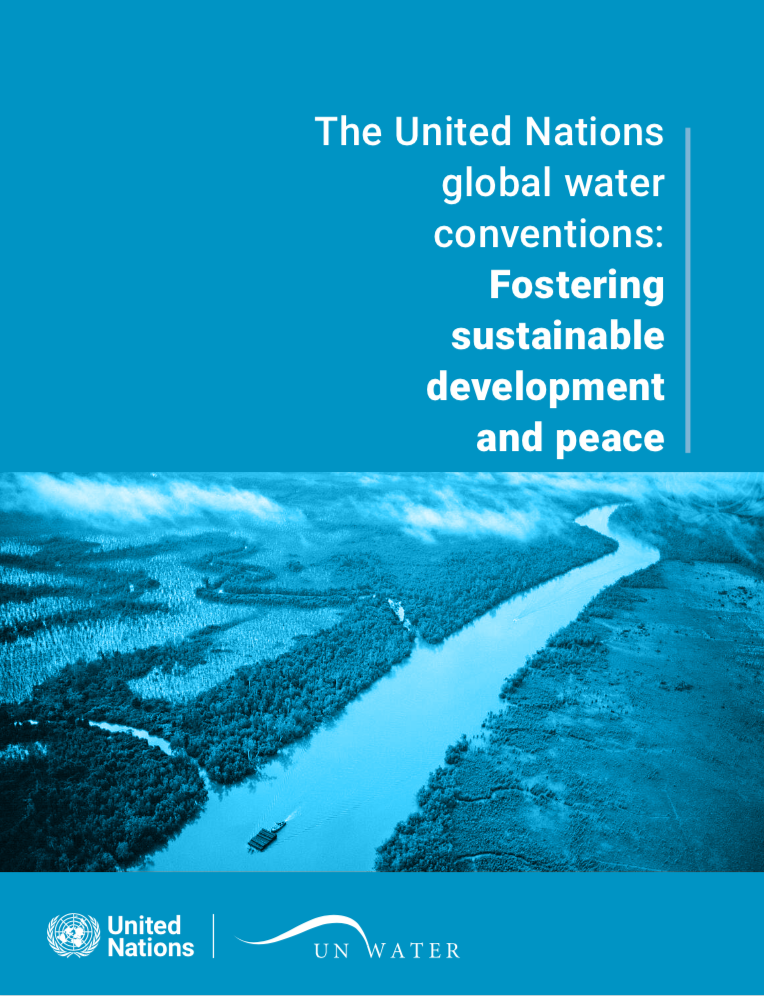The United Nations global water conventions: Fostering sustainable development and peace


Water is one of the most pressing challenges facing the world. For several years, water- related risks have been considered among the top five risks by business leaders in the annual global risk report of the World Economic Forum. Eighty per cent of global freshwater flow is in transboundary basins and 40 per cent of the world’s population live in these basins. Governing these waters in a cooperative, equitable and sustainable manner is critical for sustainable development, conflict prevention, peace and climate change resilience.
In many parts of the world, cooperative arrangements for transboundary rivers, lakes and aquifers are lacking or too weak to deal with growing water-related challenges. The establishment or strengthening of governance arrangements for these waters may offer an enabling environment for integrated water resources management (IWRM) and investment, and allow riparian countries to reap the numerous shared benefits that transboundary cooperation has to offer.
The need to further transboundary water cooperation has led to high-level calls in recent years. Repeated statements from the United Nations (UN) Secretary-General, heads of agencies and other high-level persons have urged countries to develop river, lake and aquifer arrangements and to support that endeavour by becoming a Party to the two United Nations global water conventions: the Convention on the Protection and Use of Transboundary Watercourses and International Lakes (Water Convention), and the Convention on the Law of the Non-Navigational Uses of International Watercourses (Watercourses Convention).
UN-Water Publications
UN-Water’s publications can be divided into two main groups: the publications that represent all Members and Partners of UN-Water – the collective products – and the publications that are under the UN-Water umbrella but produced by groups or individual UN-Water Members and/or Partners – the related products.
